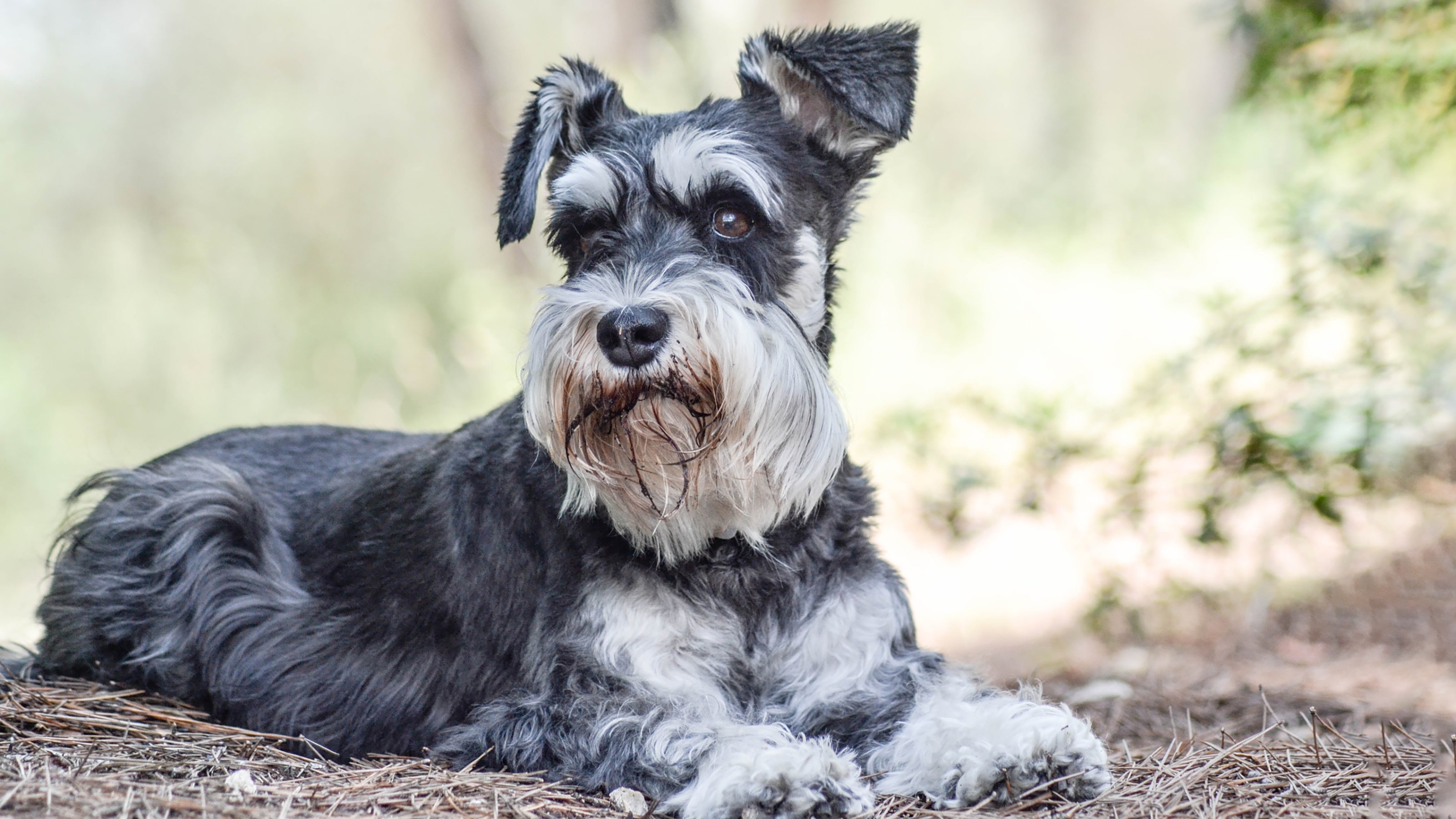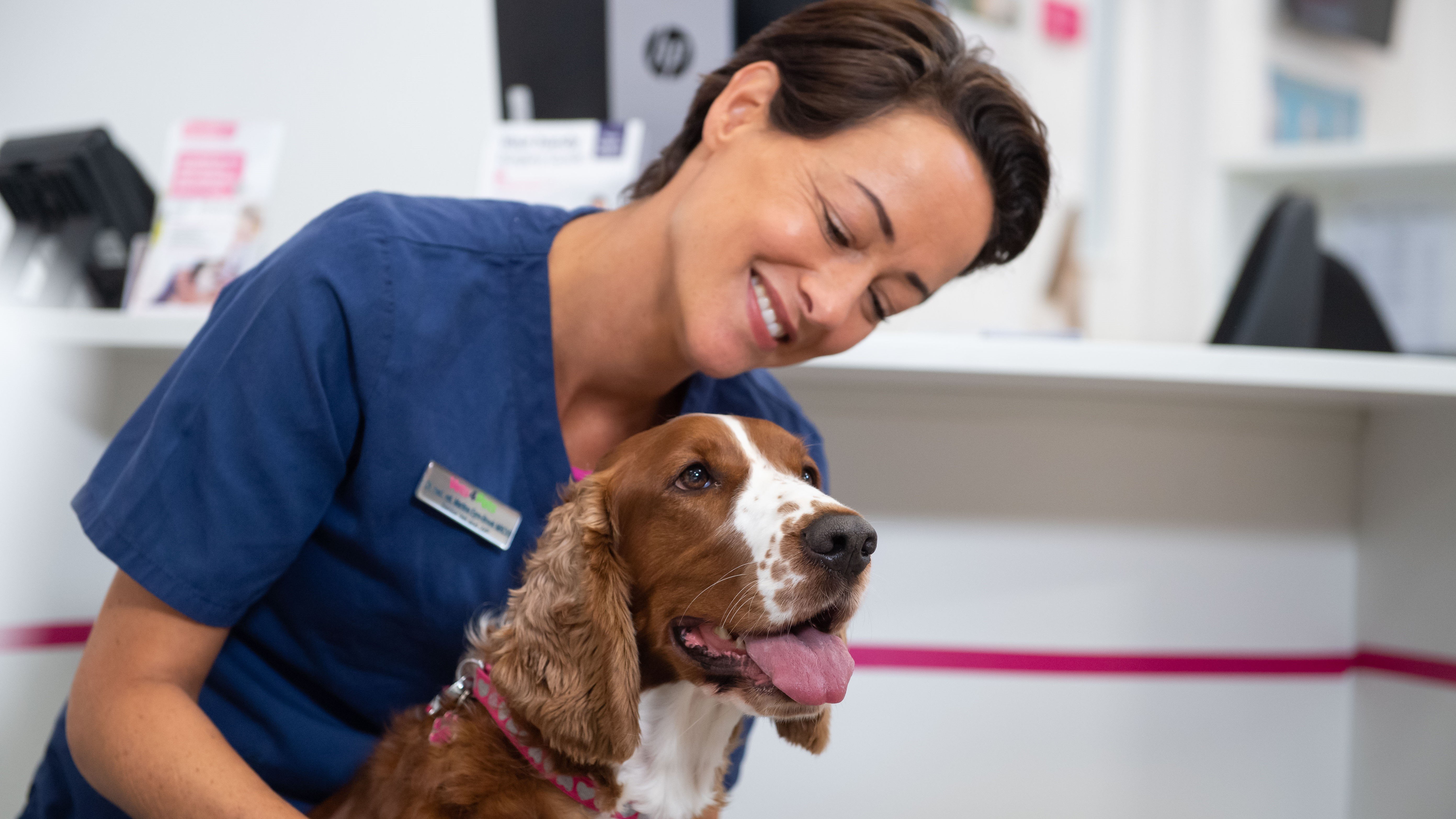
Corneal ulcers in dogs
Your dog’s eyes are delicate structures that can be easily damaged. An eye ulcer in a dog, also called a corneal ulcer, is a common, painful condition that can develop following a scratch or other injury, or because of infection.
You can’t always tell that your dog has a corneal ulcer, but if your dog shows signs of pain or discomfort around their eye, they should see their vet as soon as possible. Early diagnosis and treatment will help avoid permanent eye damage.
What is a corneal ulcer in a dog?
The surface of your dog’s eye is covered by a thin, clear ‘window’ called the cornea.
Damage to the cornea varies in seriousness. A corneal abrasion, or corneal erosion, is when only some of the cornea is damaged. However, if this erosion is deep enough, we call this a corneal ulcer. You can sometimes spot an ulcer, because it might appear cloudy. If the erosion goes deeper still, the fragile inner part of the cornea can be damaged. This is called descemetocele and is a serious condition that needs urgent veterinary attention.
The most common cause of corneal ulcers in dogs is trauma. For example, this could be caused by a scratch from something sharp in the environment, a grass seed trapped under an eyelid, or maybe from a dog rubbing their face on something.
Entropion, where a dog’s eyelid turns inwards, and distichiasis, where eyelashes grow along the rim of the eyelids, also damage the cornea every time the dog blinks. Sometimes, infections and other medical conditions can also lead to corneal ulcers.
What are the symptoms of an eye ulcer in a dog?
A corneal ulcer is painful. If you’ve ever had grit in your eye, you’ll know just how sensitive the cornea is.
When the cornea is damaged, the eye becomes very painful, and this is how you’ll know something is wrong with your dog.
Signs of eye pain in dogs include:
- blepharospasm (screwing their eyes shut)
- blinking more often than normal
- increased tear production
- altered behaviour
Dogs with eye pain may rub their face on the floor or other objects, or paw at it. They might react to people touching them around the face and they could seem grumpy. They may also try to avoid bright light.
 Other signs your dog has an ulcer include the white of their eye looking sore and red, or the cornea appearing cloudy. You may even spot an indentation or hole in the surface of your dog’s eye.
Other signs your dog has an ulcer include the white of their eye looking sore and red, or the cornea appearing cloudy. You may even spot an indentation or hole in the surface of your dog’s eye.
Corneal ulcer FAQ's
Although corneal ulcers can affect all dogs, certain types of ulcers affect some breeds more than others. Dogs with flatter faces, such as Cavalier King Charles spaniels, Pugs and Shih tzus, tend to have larger, more prominent eyes which puts them more at risk of traumatic eye injury.
Dogs suffering from dry-eye have a much higher chance of developing corneal ulcers. A study performed in 2021 found that the breeds most at risk of dry eye were brachycephalic (flat-faced) breeds and spaniels. Top of the list was the American cocker spaniel, but other significantly affected breeds included English bulldogs, Pugs and Lhasa apsos.
Boxers are at most risk of developing indolent (non-healing) ulcers.
Your vet will examine your dog’s eye closely, including a search under the eyelids for foreign bodies. They may put a few drops of a non-irritant local anaesthetic into the eye first. They’ll use an orange dye called fluorescein to check whether the cornea has been damaged.
Fluorescein might also be used at check-ups to monitor the healing of your dog’s eye ulcer. If an ulcer isn’t healing as hoped, but is getting larger or deeper, your vet will be able to tell by looking at the fluorescein staining.
Treatment of your dog’s eye ulcer will depend on what exactly is wrong. Usually, the first-line treatment for an abrasion or superficial corneal ulcer is antibiotic eye drops once the cause has been found and removed or treated. Simple corneal abrasions generally heal quickly over a few days.
Your vet may prescribe something to keep the cornea lubricated. This could be with drops, an ointment or gel.
How to apply eye drops to your dog
Your dog might also need pain relief. If the iris muscle has gone into spasm, which can happen with some painful eye conditions, your vet might ask you to administer drops to dilate the pupil. Your dog will need to be kept away from bright light when on this treatment. Normally, you’ll need to administer your dog’s eye medication at least every few hours, and your dog may need to wear a buster collar to prevent them rubbing their eye.
Contact your veterinary team immediately if you think the eye medication is making your dog feel more pain and discontinue use until your vet has advised you what to do. Never be tempted to try to treat a corneal ulcer yourself or to use a treatment from the pharmacy: it could make things worse.
In most cases, healing should be progressing well after a few days of treatment. If not, your vet may change the medication, swab the cornea to check what microorganisms are present, or debride (‘freshen up’) the edges of the ulcer to encourage healing.
If your dog has an indolent ulcer, they may need to have a surgical procedure to remove the loose epithelium to allow healthy epithelium to grow across the ulcer. Indolent ulcers can take a long time to settle down, so the surgical procedure and eye drops or ointment may need repeating.
Many deep corneal ulcers require surgery to support and protect the eye while healing occurs. Grafts of the dog’s own conjunctiva (the pink, stretchy tissue that covers the white of the eye under the eyelid), or healthy corneal tissue, can be slid across and stitched into place over the ulcer. This delicate type of surgery is most often performed by vets who specialise in eyes.
It's now also possible to repair some corneal ulcers using grafts specially prepared corneal tissue, amniotic membrane and bladder tissue obtained from other animals. Your dog will normally be referred to a specialist for procedures like this.
You can help reduce the chances of your dog developing a corneal ulcer by observing your pet and acting on possible causes before they become serious enough to damage the eye. For instance, in some breeds, particularly those with loose skin around the eyes, entropion (turned-in eyelids) is common. Also, eyelashes might sometimes grow along the edge of a dog’s eyelids and scrape the cornea. Both can lead to corneal ulceration and must be identified and treated early.
It's difficult to prevent all foreign bodies in the environment, such as grass seeds, from getting into your dog’s eyes, especially if you have a lively dog who loves to explore. However, avoiding areas of long grass on walks will reduce the risk. Likewise, if you welcome a cat into your family, supervising their interactions with your dog might reduce the chances of a scratch to the eye.
If your dog develops eye discharge, redness or watering, or seems to have pain in their eyes, contact your vet as soon as possible so that they can examine your dog and prevent what might start out as a minor problem from becoming a more serious one.
Sometimes, corneal ulcers are a symptom of an underlying medical condition. Your vet will support you in managing your dog if they develop one of these diseases, and this will help reduce the chance of an eye ulcer occurring.
Health Plans to keep your dog healthy
At Vets4Pets we offer a range of Health Plans that make essential routine treatments more affordable. You'll save money on things like annual vaccinations, flea and worm treatment and routine health check-ups.

Dog Advice
Read more of our expert dog advice to keep your dog happy and healthy.
